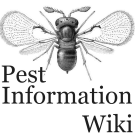Publications for:
pest = Bromus tectorum (weed)
crop = Wheat (Triticum)
country = U.S.A. (NW)
found 11 publications:2022
Predicted climate conditions and cover crop composition modify weed communities in semiarid agroecosystemsWeed Research (2022) 62 (1), 38-48
publishers website - pestinfo wiki
2021
Seed retention of grass weeds at wheat harvest in the Pacific NorthwestWeed Science (2021) 69 (2), 238-246
publishers website - pestinfo wiki
2017
Using pyroxasulfone for downy brome (Bromus tectorum L.) control in winter wheatAmerican Journal of Plant Sciences (2017) 8 (10), 2367-2378
publishers website - pestinfo wiki
First report of Ser653Asn mutation endowing high-level resistance to imazamox in downy brome (Bromus tectorum L.)
Pest Management Science (2017) 73 (12), 2585-2591
publishers website - pestinfo wiki
2015
Interacting agricultural pests and their effect on crop yield: Application of a Bayesian decision theory approach to the joint management of Bromus tectorum and Cephus cinctusPLoS ONE (2015) 10 (2 - e0118111)
publishers website - pestinfo wiki
2014
Postharvest tillage reduces downy brome (Bromus tectorum L.) infestations in winter wheatWeed Technology (2014) 28 (2), 418-425
publishers website - pestinfo wiki
2013
Joint effects of biotic and abiotic stressors on winter wheat suppression of Bromus tectorumWeed Research (2013) 53 (3), 192-200
publishers website - pestinfo wiki
2004
Downy brome (Bromus tectorum) response to imazamox rate and application timing in herbicide-resistant winter wheatWeed Technology (2004) 18 (4), 1043-1048
publishers website - pestinfo wiki
2003
MON 37500 soil residues affect rotational crops in the high plainsWeed Technology (2003) 17 (4), 792-798
publishers website - pestinfo wiki
2002
Application timing affects BAY MKH 6561 and MON 37500 efficacy and crop response in winter wheatWeed Technology (2002) 16 (4), 800-806
publishers website - pestinfo wiki
1998
Response of downy brome (Bromus tectorum) and rotational crops to MON 37500Weed Technology (1998) 12 (4), 690-698
pestinfo wiki
